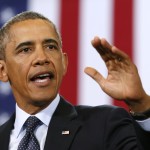In 2016, political ad spending will reach a record high of $11.4 billion, with $1 billion focused on digital media. That’s a nearly 5,000% increase in digital investment from 2008.
With 17 presidential hopefuls, distinct political personalities have emerged, including Donald Trump, Marco Rubio, Carly Fiorina, Hillary Clinton and Bernie Sanders. Through paid and unpaid media channels, these candidates and others have delivered sizzling rhetoric and sparked fiery debates to try and rise above the rest of the pack. As a result, 219 million eligible U.S. voters are beginning to develop distinct opinions and associate specific attributes with each aspiring politician – both positive and negative.
During the long election season, brand advertisers will compete for both attention and media inventory with political advertisers and position themselves to voters as favorable “candidates” for specific product purchases.
With this deluge of brand and partisan messages, it’s no wonder that ad blocking is on the rise, which makes it that much more important for brand and partisan advertisers to be relevant and impactful. After all, consumers and citizens are fundamentally all the same audience.
Consumers’ Buying Habits Mirror Their Politics
There are numerous identifiable relationships between consumers’ purchase behaviors and their political beliefs. That association has been leveraged for targeting since the direct mail days, and refined in prior election cycles.
The proliferation of new digital media channels and increased sophistication of ad tech have provided marketers with a fountain of new data and insights about their consumers. In 2016, brands will use political attributes alongside other known characteristics about a consumer, such as gender, age and household income, and then associate that knowledge with different phases of the purchase funnel, which elements of a video ad they pay attention to and what their underlying motivations are.
Big data insights are advancing the understanding of how consumers’ buying behaviors relate to their support for individual candidates. For example, data shows that the younger tech-savvy support base for Bernie Sanders is twice as likely to book travel reservations on Kayak or fly on budget carrier Spirit Airlines versus those who support Hillary Clinton. They’re also twice as likely to tune in to “The Daily Show,” while Clinton backers are far more likely to use a Fitbit or other wearable device to track their activity levels.
What Drives The Correlations?
These examples represent just the tip of the iceberg with regard to the type of buying trends that brands will increasingly uncover across candidates and party lines. But why exactly is a Clinton supporter twice as likely to purchase a Fitbit or less likely to fly on Spirit Airlines versus a Sanders supporter?
It starts with the different brand that each candidate has established, the demographics of their support bases and the values they represent. For example, Clinton’s campaign builds upon a sense of belonging and accomplishment while narrowing the gap between the Democratic Party’s elite and low-income constituencies. With Spirit Airlines, a “no-frills” airline offering “cozy” legroom, Clinton supporters may not be so willing to give up creature comforts to get the cheapest fares.
Additionally, for Clinton backers, wearing a Fitbit or Apple Watch may serve as a proud status badge for the active adult. On the other hand, Sanders has built his campaign upon social responsibility and a fervent concern for the future – supporting brands, such as Starbucks, may fit this bill.
How Brands Can Capitalize on the Election Season
By better understanding the election process itself, such as key dates and voting traditions, marketers can anticipate clever ways to get in front of and engage consumers during the election season.
In anticipation of Canada’s most recent Election Day on Oct. 19, Uber offered voters free rides to their nearest voting location. Reminiscent of 7-Eleven’s successful coffee poll idea, it wouldn’t be far-fetched to imagine brands requesting that users opt in to identify their political affinities or share their top three issues, in exchange for a free ride or product. This data can then further inform and help adapt brands’ targeting and messaging strategies.
Brands Must Be Nimbler And More Dynamic
During an election season, candidates will leverage topical debates on issues and capitalize on pivotal moments of the race in both paid and earned media. When candidates invest big bursts of paid activity around major dates, such as Super Tuesday and their national conventions, this drains inventory and pulls the oxygen out of the room that brand buzz would normally occupy.
Therefore, to successfully engage consumers throughout these moments, brands need to be prepared to operate more nimbly and with greater sensitivity to the cyclical passions of their citizen audiences.
Unlike the quarterly cadency of brand tracking, politicians will constantly poll their constituencies to better understand, “What can I say for you to support me?” With an ongoing stream of information feeding into their campaigns, candidates constantly test new messages in the market to capture voter sentiment and quickly adjust when new information emerges.
Brands similarly can learn from politicians’ dynamic playbook. By broadening the scope of measurement beyond individual campaign metrics and establishing more frequent tracking next year, brands can infuse more fluidity into their own strategies through the election’s ebbs and flows.
This column by SVP & Chief Analytics Officer Michael Horn originally appeared in AdExchanger.
Categorized as: Blog Page, News & Press


